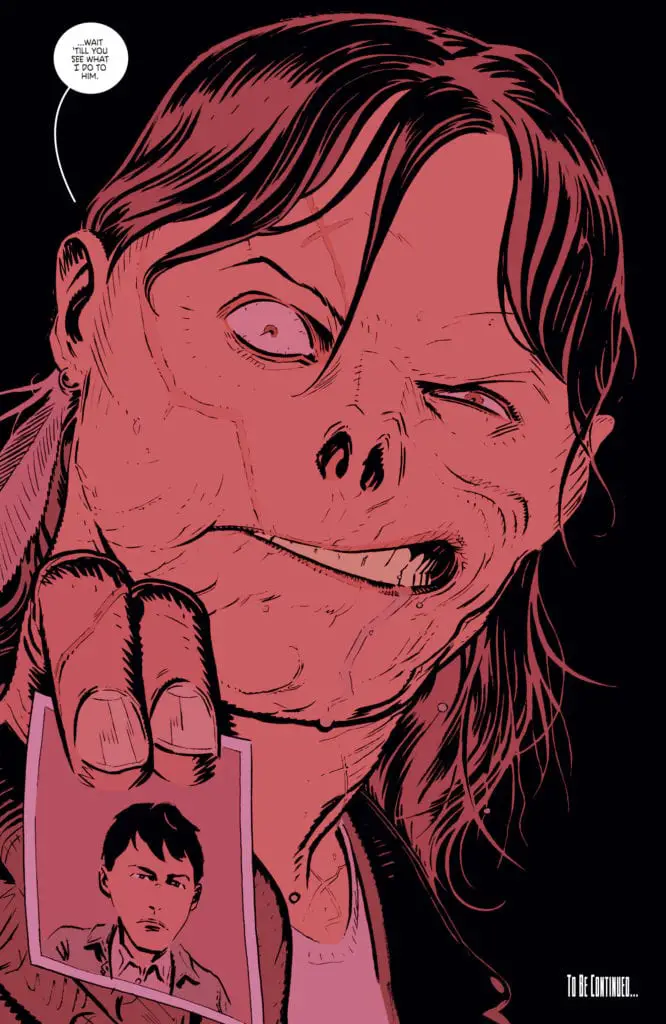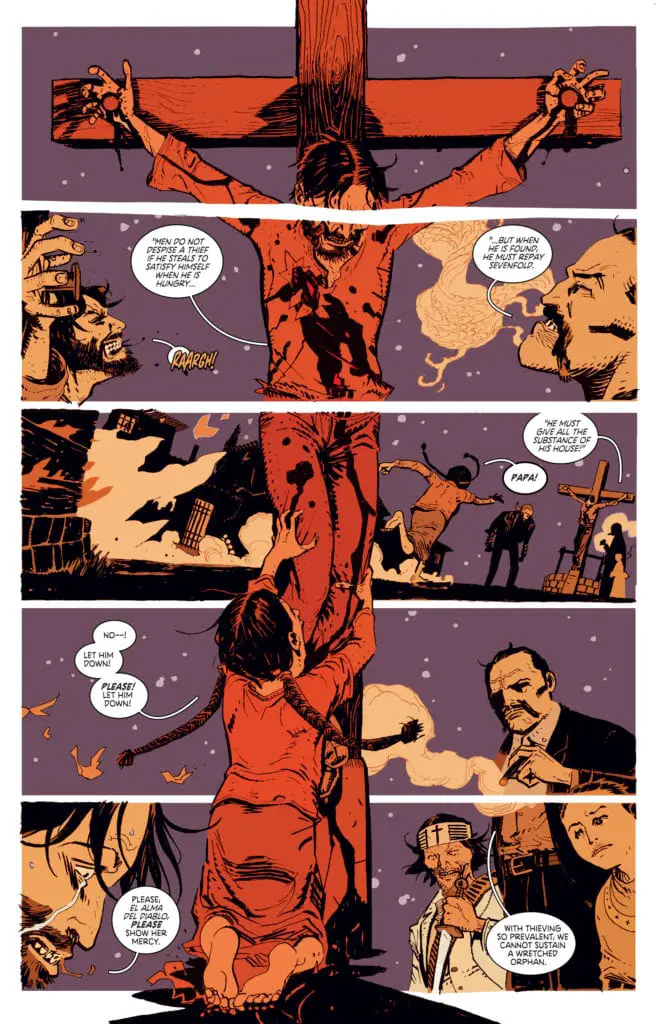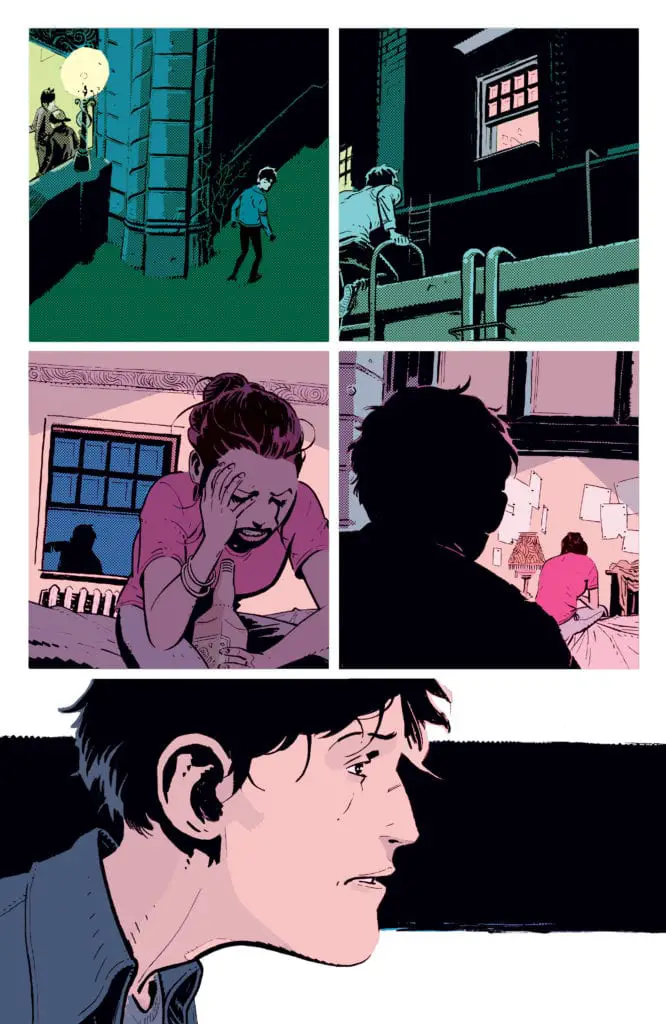Rick Remender and Wes Craig seem to genuinely know what they’re doing throughout most of Deadly Class. Simply look back at my coverage of the first arc, or even better, read it yourself. They created interesting characters. They understand the petty motivations that fuel adolescence. They understand what makes an action scene in comics truly gripping. But even with all that, the second arc of Deadly Class is a major stumbling block for the series. When I first read it, I actually considered just giving up the book and moving on to other premiering IPs. Luckily I decided to hang in there, but it was touch or go for a second. Deadly Class has phenomenal character work happening throughout this arc. Unfortunately its mired in tired stereotypes and one dimensional villains. Well, without further ado, lets dive into it.
The Second Arc
There’s no easy way around it, so best to focus on the worst part of Deadly Class: this arc’s villains. The main antagonist during these events was introduced in the first arc of the series, but he doesn’t actually affect the core group outside of a foreboding menace that they are oblivious too. That changed at the end of the Vegas trip, when Chico’s body was removed from the scene by this future baddie. This villain’s name is Fuckface. I kid you not. I wish I was making a joke. Fuckface is the death of nuance for the rest of his tenure as the big bad.

The main substance of the second arc is spent trying to track him down. If he were to give Chico’s body away, it would be very bad for the group that had committed the murder. It’s not exactly hard to track down Fuckface though. He runs a gang of hillbilly stereotypes that are running around the city murdering people, cutting off their noses, and painting “FUCKFACE” at the crime scene. There was not even the slightest attempt to explain how they are not immediately caught by the police. The suspension of disbelief is strained even more by the apparent stupidity of every member of the hillbilly gang.
Fuckface is a long list of problems for me, and for the arc as a whole. A large part of what made my introduction to Deadly Class so engrossing was that I could see a bit of my younger self in almost every character. I recognized Marcus’ urge to belong in a new environment while being unwilling to allow emotional vulnerability. I understood Willie’s lies about his history in order to appear tougher to the crowd he hung out with. I could even relate to Saya’s attempts to keep herself casually mysterious. Fuckface has none of those. He is a horrible sadist who  rapes animals. He unrelatable in every sense, yet intrinsically tied to Marcus’ past.
rapes animals. He unrelatable in every sense, yet intrinsically tied to Marcus’ past.
On that note, the past is a large part of this arc as well. The true highlights of the arc are both Maria and Marcus’ history being revealed. While Marcus opens up about his past in the Sunset Children’s Home (which was actually a front for a sweat shop) including a spiteful browbeating about the malicious uses of religion that Stephen King would find heavy-handed, Maria flashbacks to the death of her parents. Marcus’ story gives a context to his issues with authority as well as contextualizing his willingness to die on the street. Maria’s helps put her relationship with Chico in perspective, as it was only his intervention that saved her from the wrathful hand of his cartel family. This adds a depth to her actions of the previous arc, as well as setting up her fears in the present and struggles for the future.
The love triangle set up during the Vegas arc comes to a head as well. Marcus and Maria’s relationship continues after Chico’s death. Marcus can’t stop coveting Saya though. Saya uses this, sleeping with Marcus to try and ruin the relationship. Its petty and out of character for the normally aloof Saya. Maria’s jealousy and attempts at emotionally manipulating Marcus are well within her character, however. All of this is complicated by the fact that Marcus is unequivocally bad at empathizing with either girl and what they want. The whole affair seems to end with Marcus alone and the girls begrudgingly agreeing to bury the hatchet.
The finale is Marcus’ group storming the rundown hovel of Fuckface’s hillbilly gang. The action is frantic, plans fall apart, the group acts out on petty jealousies, but in the end there is a clear success. Marcus allows Fuckface’s dogs to rip him apart in a final battle in the dark of a fetid basement, and the group recovers Chico’s head. The whole affair is wholly lacking in catharsis and full of cringe-worthy dialogue. Highlights include a monologue about hillbillies being the last safe harbor for prejudice as well as Fuckface’s dying words literally being “Faggot” (Ugh). It’s all very slap dash and feels like a rush to conclude the whole affair, as if Remender and Craig realized that the villain was not winning over hearts and minds. The final page of the arc is, however, an exciting promise of the future. Chico’s cartel family is shown waiting for the group outside of the rundown fortress, apparently called there by Fuckface himself.

Major themes throughout the arc include depression, the urge for emotional recoil, and an inability to empathize. Most of Marcus’ actions within the arc help reinforce his inexperience with interpersonal relationships. His follies and failings flesh out what would otherwise be a lacking arc. His relationship with Maria is depicted as selfish, from both ends, with neither person being able to empathize properly with the other ones loss. This is in spite of them sharing a strand of pain that pervaded their lives. That urge to reach out and inability to accomplish it is a large part of what makes Marcus fail as a person and succeed as a character, and its exhibited to amazing effect all throughout this arc.
For all of its failings in creating a captivating villain, Deadly Class continued to do nuanced character work. As uninspired as the gang was, the finale’s action was engaging with Wes Craig’s beautiful art. And with all that said, the future of Deadly Class is bright, with past sins catching up to the group in a big way. Things get hectic and uncertain moving forward, so the arc’s commitment to having some downtime with its characters was nice.

